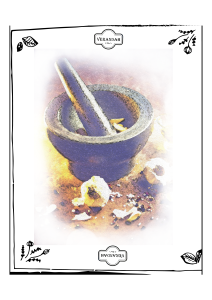
Where Is the Best Peranakan Food in Singapore?
The search for the best, most authentic Peranakan food is relentless. Many Peranakan restaurants missed the mark with the purists. Before we decide where the most authentic Peranakan food is found, let’s dig a little into history to find out the origin of Nonya cuisines.
History of Peranakan Food
Chinese, Malay and other Southeast Asian cultures make up the unique flavors of Peranakan and Nyonya food. With the influx of Chinese immigrants in the 15th century, they brought their cultures and traditions.
It was there, in the Malaysia state of Malacca, Penang and some parts of Indonesia that immigrant Chinese traders settled down and marry local Malay women. A whole new colourful and complex culture was formed over the next few decades when local and Chinese cultures began to blend. These early immigrants blended their cultures and traditions with the best of Malay, Chinese, and Indonesian culinary traditions. Thus forming the hybrid of Peranakan food culture.
Where is the Most Authentic Peranakan Food in Singapore?
This decades-long debate is just one of the many that surround Peranakan food culture today. Speak to any true blue Peranakan family about food, and you would probably end up getting a passionate rendition of how Peranakan food should be prepared.
For many of us, food has a strong emotional connection. Especially our favourite dishes that evoke childhood memories that bring back the feelings of comfort and love. Hence, each family will always say that their families’ versions of favorite Peranakan dishes are the best. Because our tastes are influenced from young by our mothers’ cooking. Therefore, the debate continues for the most authentic Peranakan food because nothing will ever be as good as those from mom’s kitchen.
Additionally, the flavours of Peranakan cuisine are influenced heavily by the region in which they are prepared. A dish’s flavors and ingredients are adapted to local tastes and the availability of ingredients. The Peranakan Laksa is a classic example. Unlike in southern Malaysia and Singapore, where Indonesian influences result in a broth that is rich with coconut milk, the same dish in Penang is flavoured with Assam, owing to its Thai influences.
Best Peranakan Dish
Among the ingredients of Peranakan dishes are coconut milk, lemongrass, torch ginger, galangal, belachan, and kaffir lime leaves. Peranakan dishes are characterized by these regional ingredients, which combine to produce a robust culinary treat.
There is no such thing as fast food in Peranakan cuisine; it requires a high level of patience and meticulous preparation.
The meat and seafood must be marinated for many hours before they can be added to the cooking process. This is done in order that the spices can be properly absorbed. In addition to the spices, fresh spices are preferred for their strong flavors. A mortar and pestle are often used to grind the lemongrass, wild ginger and turmeric root that give Peranakan food its strong and distinct flavour.
Although there isn’t a “Best Peranakan Dish”, here are 2 popular iconic Peranakan cuisines:
Babi Pongteh
Babi Pongteh is a dish made from braised pork belly or other meat with large amounts of fat. It is prepared with fermented soy bean paste and turnips, slow-cooked to perfection.
This beautifully sweet and savoury traditional Peranakan stew is best enjoyed with a big steaming bowl of rice.
Ayam Buah Keluak
The quintessential Peranakan dish is prepared with Buah Keluak – a black, oily nut. It is often described as an acquired taste, reminiscent of cacao, shrooms and black olives. It has been hailed as the Asian equivalent of black truffles. These large black nuts are mostly found in the mangrove of Indonesia. They require several days of soaking and scrubbing, to ensure all traces of cyanide is removed. It is a labour-intensive task but one that is absolutely necessary.
A lot of time and preparation goes into creating Chicken Buah Keluak, a flavour-packed stew made by braising chicken in a tangy tamarind sauce and enriched with the addition of keluak nuts that are stuffed decadently with a mixture of spices and pork.